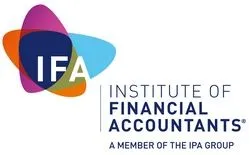Can vat registration be avoided by splitting the business?

The artificial separation of business for VAT purposes is called “Disaggregation”
Business as a legal entity has to register for VAT (Value Added Tax, an indirect tax) if certain turnover goes pass a certain threshold.
Taxable person
An Individual or organization that is in business is known as a 'taxable person' for VAT purposes and can be any of the followings
- Individual (Sole trader)
- Partnership (2 or more individual or businesses)
- Limited company
- Club (sports or social etc)
- Association
- Charity (yes charities have to comply with VAT and Payroll but not income tax in general)
- Any other organization or group of people acting together under a particular name, such as an exhibition, educational, conference or health institution, etc
When a business owner(s) for vat purpose decides to split business activities to keep overall business turnover under the vat threshold it is called disaggregation and it is something HMRC is not happy about.
Examples of disaggregation
1) A Sole trader providing similar services via two different businesses
2) Running two limited companies providing related services
There could be genuine commercial reasons to have two lines of businesses therefore it is crucial to get this right else there will be massive consequences.
Note that, with VAT registration, HMRC has the power to go back up to 20 years and collect arrears of tax. It is only the correction of errors made on past VAT returns when a four-year time cap applies.
To gain potential competitive price advance (not charging vat) business owners may decide to have an arrangement of multiple business entities but one needs to be careful in doing as HMRC will look into these matters under following guidelines to prevent tax avoidance.
Financial
Businesses have the same bank account
A common business profit or financial interest that benefits both businesses
Financial dependency on one another.
Organizational
Common employees and/or managers.
Economic
Sharing equipment
Operating from the same offices
Sharing advertisements.
HMRC requires one point from each section for the businesses to be challenged. The more points that are present, the stronger HMRC’s case will be.
HMRC says that "We are not required to prove that there was an intention to avoid VAT. We are required to prove that artificial separation resulted in an avoidance of VAT."
If there are legitimate reasons for a business to have a split then it is best practice to
- Have separate bank accounts and business records
- Each business is separately registered with HMRC and submit their own tax returns
- Customers should be made clear that they are dealing with two separate independent businesses
- Inter business transactions i.e any charges for goods and or services between the split businesses must be conducted at arm’s length.
- Separate contact details i.e telephone numbers, websites, e-mail addresses, etc
- Separate premises or, at least, separate floor space
- Separate payrolls and employees
- Separate IT systems,
- Separate equipment and plant, fixtures and fittings, etc
- Separate stock
- Separate management
The legislation
The provisions, which were contained in the Finance Act 1997, section 31, make the following main changes:
- paragraph 1A is inserted into Schedule 1 to the Value Added Tax Act 1994. It clearly states that the purpose of paragraph 2 is to counter any artificial separation of business activities resulting in an avoidance of VAT. In determining whether or not any separation is artificial the extent to which the parties involved are closely bound to one another by financial, economic and organizational links must be taken into account
- paragraph 2(2)(d) of Schedule 1 is repealed. It prevented the Commissioners taking action unless they were satisfied (amongst other things) that one of the main reasons for the separation was the avoidance of registration
The purposive clause is an over-arching provision against which a direction made under this legislation must be tested. Its inclusion is a conscious attempt to indicate Parliament’s aims in passing the legislation, and to encourage tribunals and courts, when considering appeals, to test not only the legal technicalities but also whether the disaggregated business arrangements result in a VAT loss.
There was an interesting case at First-tier Tribunal decision in Graham and Christine Belcher (TC5891) about business splitting which HMRC lost it.
Quick facts:
Mr. Belcher traded as a barbershop from 1991 and his wife as a ladies hairdresser from 1997 to 2005 part-time using the same premises and then full-time when she left her job in 2005.
Their trading name was Crewe Cuts, they completed partnership tax returns for self-assessment and had one account with their key suppliers.
They also had joint
- insurance policies
- Music license for the premises
- Telephone line
- One business bank account combining both activities.
HMRC began inquiries in 2015 and registered the partnership for VAT from 1 January 2006, based on turnover figures declared on the partnership returns. The net VAT owed was £136,691 plus a late registration penalty of £15,829.
Belchers had no chance of convincing the tribunal that they traded as independent sole traders with each business trading below the VAT registration threshold.
Decision: The taxpayers’ appeal was allowed on following grounds
The judge found the following facts:
- Separate Cash flow: businesses paid for cash expenses separately from their respective tills;
- Staff Management: hiring and firing was done independently; and
- No Partnership: A key point was that there had been ‘no conscious intention to run a single business in partnership’.
The judge noted that Mrs. Belcher had said, if either part of the business was sold, this would be the sole decision of the owner of that particular trading business and not a joint partnership decision. He was also ‘very impressed’ that Mrs. Belcher had told the HMRC officer as soon as he started his inquiry that there were two separate businesses: ‘That was Mr. and Mrs. Belcher’s case from the beginning and it has not changed.’ Further, the officer had not asked the Belchers about their trading intentions, as suggested in HMRC’s manual Single Entity and Disaggregationat VATDSAG03200.
The Belchers made life difficult for themselves since many elements of their operation indicated a single business. Overall, the case illustrates that separate entities need to take into account all factors to create independent businesses, and commercial reality must clearly indicate that separate entities are in place. This is particularly important when family members are involved because there is less incentive to conduct proceedings on an arm’s length basis. Any transgressions will result in HMRC almost certainly challenging the separation, either from a current date or, in some cases, retrospectively.
HMRC has introduced some new measures, how it will apply in particular circumstances
Franchised businesses
HMRC does not expect this measure to affect genuine, as opposed to artificial, franchising.
Hairdressers
The existing agreement between the National Hairdressers Federation and HMRC is used to determine whether or not a stylist working in a salon is an employee or a self-employed person. The new measure applies only to self-employed persons. HMRC will amalgamate those self-employed stylists who are artificially separated provided that the legal criteria are met.
Self-employed taxi drivers
The ways in which taxi firms operate can vary. Only those firms, which operate in such a way that the legal criteria are met, will be registered by HMRC as a single business.
Businesses already registered for VAT
The measures enable HMRC to register businesses that otherwise would not be registered for VAT. Consequently, HMRC will not use their powers to amalgamate when all of the parties involved are already VAT registered. However, where the powers are invoked, existing registrations will be canceled from the current date and the newly amalgamated businesses will be registered with a new number.
Registration date for amalgamated businesses
When HMRC invokes the measures, the liability to be registered as a single business will take effect from the date of the direction, or such later date as may be specified in the direction.
Penalties
The new measures do not introduce any fresh penalty provisions. However, should artificial separation continue as a means of avoiding VAT, the position on penalties will be reconsidered.
Appeals
Businesses, which disagree with HMRC’s decision, will be able to appeal to the VAT and duties tribunal. The basis of the Tribunal’s decision will continue to be whether HMRC could reasonably have been satisfied that there were grounds for treating all the separated parts as a single taxable person, given the legal criteria and the purpose of the legislation.
Advice on proposed separations
It is a matter for the parties concerned, after due consideration of all the relevant factors, to determine how to structure their business activities. Accordingly, HMRC will not advise on the VAT consequences of any proposed structure but we will give a decision when faced with an actual situation.
Responsibility for issuing directions
Responsibility for issuing directions will remain with local HMRC offices, which should be contacted if you have any inquiries.





